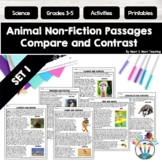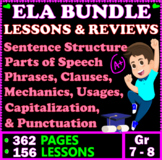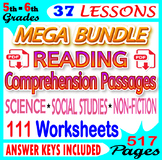97 results
8th grade physics scaffolded notes for Microsoft Word

Introduction to Work and Power Guided Notes and Practice Worksheet
Guided notes to accompany introduction PowerPoint (my primary free product!) and practice problems including solving for work and power, identifying when work is done, and a fill-in-the blank review section of vocab from work, power, force, etc.Designed to accompany: PowerPoint Introduction to work and power with examples and practice problemsNext lesson: 5.1 What is Energy powerpoint
Subjects:
Grades:
8th - 10th

Concept Compare: Kepler's (and Newton's) Laws of Planetary Motion for Orbits
This concept comparison is between: Kepler's Laws of Planetary Motion, and how they relate to Newton's Laws of Motion and the Law of Universal Gravitation. Bring a calculator!The Concept Comparison Routine is used help compare and contrast key concepts. Specifically, students use like and unlike characteristics and categories shared and not shared by two or more concepts to better understand the overall concept. Students taught using the Content Enhancement routines earned higher total test scor
Subjects:
Grades:
7th - 12th, Higher Education
NGSS:
HS-ESS1-4
Also included in: StayGiant Earth Science Bundle: Astronomy (space exploration)
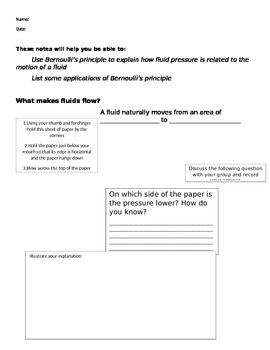
Bernoulli's & Pascal's Principle PowerPoint Notes
With this Powerpoint Note Taking guide your students will be able to:
1. Use Bernoulli's principle to explain how fluid pressure is related
to the motion of a fluid
2. Use Pascal's principle to explain how fluid pressure is applied
and transmitted
3. Identify and explain applications of Bernoulli's and Pascal's
principle.
4. Notes keep students on pace with powerpoint and are an
excellent tool to check for understanding with formative
asses
Subjects:
Grades:
7th - 12th
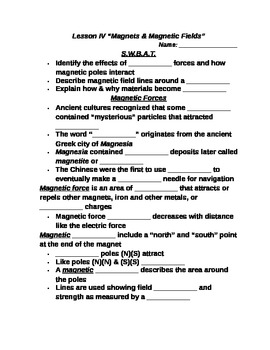
Lesson IV Student PowerPoint Note Guide "Magnets & Magnetic Fields"
This lesson aligns with the Common Core State Standards:
"STANDARD 5 - Matter and Energy
The competent science teacher understands the nature and properties of energy in its various forms, and the processes by which energy is exchanged and/or transformed.
5A. understands the atomic and nuclear structure of matter and the relationship to chemical and physical properties
5D. understands the characteristics and relationships among thermal, acoustical, radiant, electrical, chemical, mechanical, a
Subjects:
Grades:
7th - 9th
CCSS:
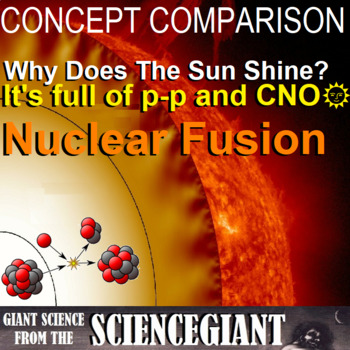
Concept Compare: Why Does the Sun Shine? Thermonuclear Fusion! (p-p and CNO)
This Concept Comparison of Thermonuclear Fusion contrasts proton-proton (p-p) chain reactions, and the "cold" carbon-nitrogen-oxygen (CNO) cycles. Help Ss communicate scientific ideas about the way stars produce elements over their life cycle. Emphasis is on the way nucleosynthesis, and therefore the different elements created, varies as a function of the mass of a star and the stage of its lifetime. As cosmologist Carl Sagan famously said, “We are made of star stuff.” And we literally are! We a
Subjects:
Grades:
8th - 12th, Higher Education
NGSS:
HS-PS1-8
, HS-ESS1-3
, HS-ESS1-1
Also included in: StayGiant Earth Science Bundle: Astronomy (space exploration)
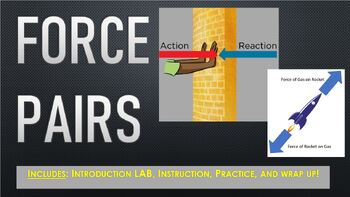
Force Pairs Lesson
This resource (Lesson 3 of my Energy and Motion Unit Bundle) includes everything you need to introduce, instruct, practice, and wrap up Newton's 3rd Law of Motion - force pairs - for each action, there is an equal and opposite reaction force. The introduction activity is a fun and engaging lab in which students can interact with the forces that make a balloon rocket go. All teacher prep is included Save $3 by getting the Energy and Motion Unit bundle in my store, which includes the following:1.
Subjects:
Grades:
6th - 10th
NGSS:
MS-PS2-1
Also included in: Force and Motion BUNDLE

StayGiant Physics Bundle: Electricity
Electric Charge, Electric Force, and DC CircuitsSs begin an exploration of electricity by learning about the electric force and the properties and interactions of electric charges. Ss continue by examining electric circuits and the interactions between current, resistance, and voltage.Topics include:Conservation of chargeElectric chargeElectric forceDefinition of a circuitResistivityOhm’s law, Kirchhoff’s loop rule (resistors in series and parallel)Kirchhoff’s junction rule, Ohm’s law (resistors
Subjects:
Grades:
8th - 12th, Higher Education
NGSS:
MS-PS3-2
, HS-PS3-1
, HS-PS3-5
, 4-PS3-2
, HS-PS3-3
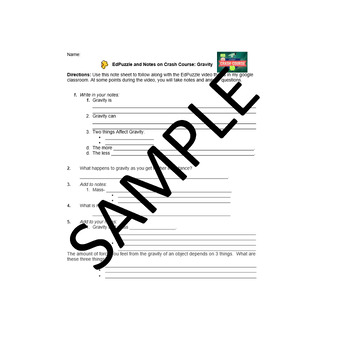
Crash Course Gravity EdPuzzle Note Sheet
· This note sheet is great to use as a warm-up, quick notes, or self-paced with a substitute. · This note sheet only covers the first 4 minutes of the Crash Course Gravity Video. After that point he gets more advanced than my 7th grade students need. Here is the link to my EdPuzzle Lesson that goes with these notes. The EdPuzzle will prompt them to write notes and fill in answers to the questions as they watch.
Subjects:
Grades:
6th - 8th
Types:
NGSS:
MS-ESS1-2
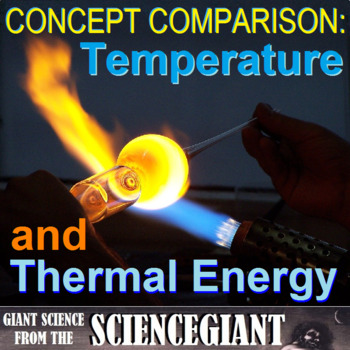
Concept Comparison: Temperature vs Thermal Energy
This Concept Comparison contrasts thermal energy and temperature as they relate to heat transfer. It builds from middle school science concepts of mechanical energy, and an introduces specific heat capacity and the laws of thermodynamics.The Concept Comparison Routine is used help compare and contrast key concepts. Specifically, students use like and unlike characteristics and categories shared and not shared by two or more concepts to better understand the overall concept. Students taught using
Subjects:
Grades:
7th - 12th, Higher Education
NGSS:
HS-PS1-4
, MS-PS1-4
, HS-PS1-5
, MS-PS1-6
Also included in: StayGiant Physics Bundle: Thermal Energy
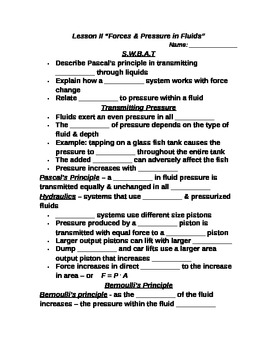
Lesson II Student PowerPoint Note Guide "Forces & Pressure in Fluids"
This lesson aligns with the Common Core State Standards:
"STANDARD 6 - Force and Motion
The competent science teacher understands and applies the concepts that describe force and motion and the principles that explain them.
6B. understands the concepts and interrelationships of force (including gravity and friction), inertia, work, power, energy, and momentum
6I. demonstrates abilities to use instruments or to explain functions of the technologies used to study force and motion."
Student not
Subjects:
Grades:
7th - 9th
CCSS:
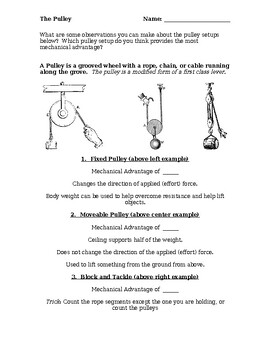
Physics: The Pulley Guided Student Notes (Fixed, Moveable, Block & Tackle)
This MS-Word handout helps guide a lesson on pulleys as part of a physics simple machine unit or Rube Goldberg project. Two levels of guided student notes are provided, the first for limited note taking for special needs students, and the second for typical students who can take full lesson notes. Since this is a word document, you can modify the level of detail you want students to take or fill-in. This is a great handout to use as a lesson exit ticket. The entire handout is can be previewe
Subjects:
Grades:
7th - 10th
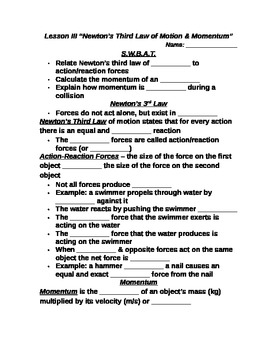
Lesson III Student PowerPoint Note Guide "Newton's Third Law & Momentum"
This lesson aligns with the Common Core State Standards:
"STANDARD 6 - Force and Motion
The competent science teacher understands and applies the concepts that describe force and motion and the principles that explain them.
6B. understands the concepts and interrelationships of force (including gravity and friction), inertia, work, power, energy, and momentum
6G. describes the effects of gravitational, electromagnetic, and nuclear forces in real life situations."
Student note guide or "fill in
Subjects:
Grades:
7th - 9th
CCSS:
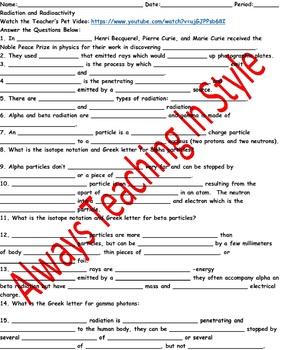
Radiation and Radioactivity Video Worksheet (Editable)
Here is an introduction worksheet to Radiation and Radioactivity video from Teacher's Pet (video link is embedded at the top of the worksheet). There are thirty-six questions that go along with the video. There is one HOT activity which is a comic strip that asks students to do extra research on one of the three types of radiation they learned about, and make a comic strip explaining that type of radiation. Along with the activity is a rubric to help grade the students.
This worksheet can be u
Subjects:
Grades:
6th - 12th
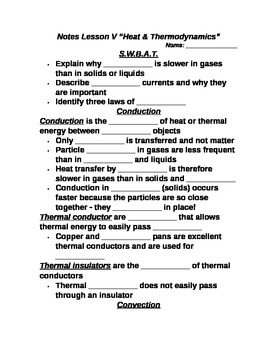
Lesson V Student PowerPoint Note Guide "Heat & Thermodynamics"
This lesson aligns with the Common Core State Standards:
"STANDARD 5 - Matter and Energy
The competent science teacher understands the nature and properties of energy in its various forms, and the processes by which energy is exchanged and/or transformed.
5D. understands the characteristics and relationships among thermal, acoustical, radiant, electrical, chemical, mechanical, and nuclear energies
5F. explains conservation of mass and energy and explains interactions of energy with matter, inclu
Subjects:
Grades:
7th - 9th
CCSS:

Question Exploration and Concept Compare Frame: The Ear and Hearing
Listen up! This question exploration helps Ss answer How do you hear? It explains the physics of the sense of hearing, ear anatomy and acoustics for physical science students. This product also includes a concept comparison frame of the decibel scale, two classroom activities to try with students. First is a Line-Up, to get students out of their seats and review the main idea answer by making a human model of the outer and inner ear. The second activity is a fill-in-the-blank worksheet on ear an
Grades:
8th - 12th, Adult Education
NGSS:
MS-PS4-1
, MS-PS4-2
, HS-PS4-1
Also included in: StayGiant Physics Bundle: Waves and Sound
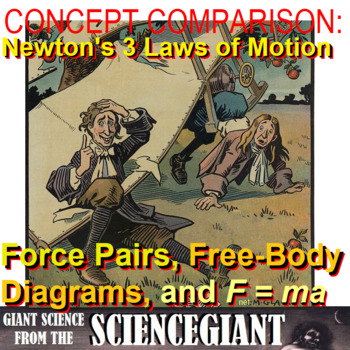
Concept Compare: Newton's Laws of Motion, Force Pairs, and Free-Body Diagrams
This Concept Comparison Frame explores Newton's Laws of Motions and introduces dynamics of unbalanced forces, including the Law of Inertia, F=ma, and action-reaction pairs using many models including free-body diagram and algebra equations.The Concept Comparison Routine is used help compare and contrast key concepts. Specifically, students use like and unlike characteristics and categories shared and not shared by two or more concepts to better understand the overall concept. Students taught usi
Subjects:
Grades:
8th - 12th, Higher Education
NGSS:
MS-PS2-2
, HS-PS2-1
, MS-PS2-5
, MS-PS2-1
, HS-PS2-3
Also included in: StayGiant Physics Bundle: Dynamics
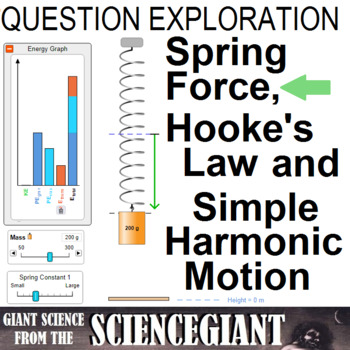
Question Exploration: Spring Force, Hooke's Law and Simple Harmonic Motion
This Question Exploration helps Ss answer the question: How does a spring scale work? Ss will identify conditions of simple harmonic motion and relate to Hooke's Law to find the spring force and spring constant. Ss will also examine the relationship between the amount a linear spring is stretched and the restoring force that acts to return the spring to its rest length. This concept is central to an understanding of elastic potential energy in mechanical systems and has implications in the study
Subjects:
Grades:
8th - 11th, Higher Education
NGSS:
HS-PS2-2
, HS-PS2-1
, HS-PS2-6

Solar Oven Design Research Organizer
One of my favorite end-of-the-year projects is building a solar oven that students can actually use as a means to learn about heat transfer. Taught through the lens of surviving the zombie apocalypse, this resource will allow students to start formulating design ideas on how to make the most effective solar oven possible. The research organizer includes a link to an extensive Padlet and is chunked into different kinds of resources for various kinds of learners. The organizer starts students with
Subjects:
Grades:
7th - 11th
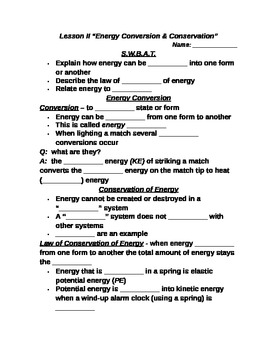
Lesson II Student PowerPoint Note Guide "Energy Conversion & Conservation"
This lesson aligns with the Common Core State Standards:"STANDARD 5 - Matter and Energy The competent science teacher understands the nature and properties of energy in its various forms, and the processes by which energy is exchanged and/or transformed. 5A. understands the atomic and nuclear structure of matter and the relationship to chemical and physical properties5D. understands the characteristics and relationships among thermal, acoustical, radiant, electrical, chemical, mechanical, and nu
Subjects:
Grades:
7th - 9th
CCSS:
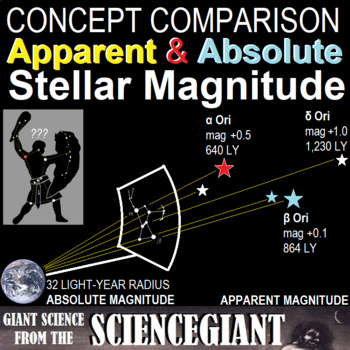
Concept Comparison: Apparent vs. Absolute Magnitude of Star Brightness
What is the stellar magnitude scale? This Concept Comparison helps Ss contrast apparent magnitude and absolute magnitude. The Question Exploration guides Ss to an explanation of why star light isn't always star bright. Included are three mathematics worksheet and one optional art activity from NASAThe Stellar Magnitude Scale: Ss learn about positive and negative numbers using a popular brightness scale used by astronomers.Star Magnitudes and Decimals: Ss work with the stellar magnitude scale to
Subjects:
Grades:
8th - 12th
NGSS:
HS-ESS1-4
, HS-ESS1-2
Also included in: StayGiant Earth Science Bundle: Astronomy (space exploration)
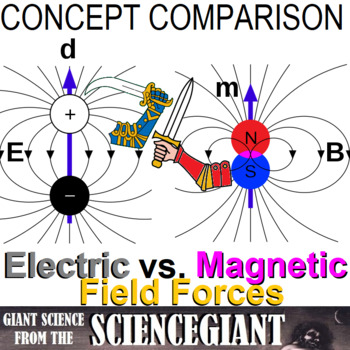
Concept Comparison: Electric Fields vs Magnetic Fields
Electric and magnetic fields are both components of an electromagnetic field. But is it just as simple as saying to Ss magnetic effect is caused by moving electric charges while an electric field is caused by stationary charges? Nope! This concept comparison helps Ss contrast Electric Fields (E) versus Magnetic Fields (B).Concept Comparison Routine is used help compare and contrast key concepts. Specifically, students use like and unlike characteristics and categories shared and not shared by t
Subjects:
Grades:
7th - 12th
Also included in: StayGiant Physics Bundle: Magnetism and Electromagnetism

Question Exploration: What is Static Electricity? What are Electric Charges?
What is static electricity? This Question Exploration helps Ss explains how objects become electrically charged, and contrasts conductors with insulators. Question Exploration Routines are an instructional method that teachers can use to help a diverse student population understand a body of content information by carefully answering a critical question to arrive at a main idea answer. Students taught using Content Enhancement earned higher total test scores than did students taught using the l
Subjects:
Grades:
8th - 12th
NGSS:
MS-PS3-2
, HS-PS3-1
, HS-PS3-5
Also included in: StayGiant Physics Bundle: Electricity
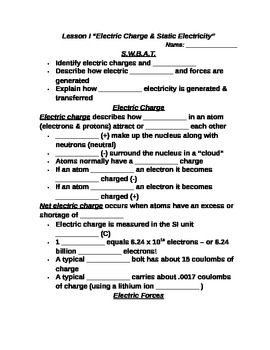
Lesson I Student PowerPoint Note Guide "Electric Charge & Static Electricity"
This lesson aligns with the Common Core State Standards:"STANDARD 5 - Matter and EnergyThe competent science teacher understands the nature and properties of energy in its various forms, and the processes by which energy is exchanged and/or transformed.5D. understands the characteristics and relationships among thermal, acoustical, radiant, electrical, chemical, mechanical, and nuclear energies5H. analyzes atomic and nuclear reactions in natural and man made energy systems.5I. demonstrates the a
Subjects:
Grades:
7th - 9th
CCSS:
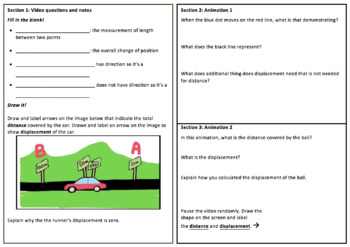
Distance vs. Displacement? Web Activity
This lesson reviews distance vs. displacement through a series of interactive, stimulating activities on Padlet. Students will watch a video defining the two terms, examine two animations and then apply them in two popular video clips. Finally, students will practice calculating distance vs. displacement on Google Maps.
The resource contains three versions of the activity at different levels and the link to the Padlet. Documents are easy to edit and modify to fit your school or district!
Subjects:
Grades:
7th - 11th
Types:
Also included in: Introduction to Motion Bundle
Showing 1-24 of 97 results




